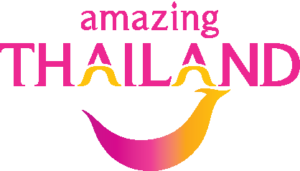SLOVENIA
Slovenia Itinerary: Two Weeks of Eco Friendly Travel in Slovenia.
I went to Slovenia with few expectations but a couple of assumptions. Assumptions that I’m happy both turned out to be wrong.
My first assumption was that ten days would be sufficient to explore much of Slovenia. Despite being a small country, Slovenia is packed with gems of destinations to discover. Even with ten days in the country I ended up missing out on places I would have liked to have visit, but did not have the opportunity to. If you can spare fourteen days for this beautiful little country: do so. If you only have one week to travel in Slovenia then this Slovenia itinerary is do-able, but you’ll have to move on faster.

In my opinion there are few countries in the world where Eco-Friendly travel is as easy or as enjoyable as it is in Slovenia. This Slovenia itinerary is by no means an exhaustive list of all of the attractions in the country with great credentials, but it is meant to be a starting point. Above all, do research, explore, and enjoy venturing off some of the beaten tracks.
When is the best time to visit Slovenia? I visited Slovenia in late September which was the perfect season to visit for me. The country does see significantly more visitors in July and August so it’s better to avoid those months if you can. April, May and June make great times to go as well as September – or the winter if you are looking for some spectacular snow!
Like this post? Pin it on Pinterest!

Eco Friendly Travel in Ljubljana
I wrote about things to do in Ljubljana in my previous post.
You can easily spend a couple of days in this lovely city at the start or end of your trip, or even in the middle which might make more sense depending on where you are arriving from. Public transportation in Slovenia (bus or train) usually requires having to change in the capital, so you could equally choose to spend a day or two in the city to break up your journey between the north and south of the country.
Slovenia Itinerary: Responsible Travel in Slovenia.

The Northen end of Lake Bled in early autumn.
Lakes: Bled vs Bohinj? (2-3 Days)
The first time I saw Bled I just passed through. I only caught a glimpse of the lake from the windows of my bus, as we went on to Bohinj. I was curious however to see the famous lake and its castle, so I returned to Bled near the end of my time in Slovenia.
The image of Bled and the island at the centre of the lake is by far the most famous image of Slovenia, and the main reason for many peoples’ trips to the country. There’s no denying that Bled is beautiful, and there is plenty to do in Bled to keep you occupied for a day or two; from sampling the cream cakes, to boating across the lake and visiting the castle. My main issue with Bled was the crowds. Tour bus after tour bus rolled up during my time there, and it was the most crowded spot that I saw during my time in Slovenia. It’s also a town that has chosen to invest in opening casinos as opposed to promoting its more natural attractions—or so it seemed.
Lake Bohinj is the lesser known of the two lakes, and is one of Slovenia’s Green Destinations. Here the atmosphere is completely different. There’s not much to do in Bohinj town, but the outdoor activities could keep you busy for days on end. The lake itself is more peaceful, and is located within the Triglav National Park. Besides the lake, Bohinj is also famous for its flower meadows up in the hills above the lake, and the best time to visit these is in May.
Bohinj has also worked to ensure its local communities are supported through tourism through creating the Bohinj Brand—‘Bohinjsko from Bohinj’. The brand is a signal to visitors that the product has been created locally, in partnership with local communities. The brand covers products ranging from food products and teas to arts and crafts and general souvenirs, and are available in a number of restaurants and gift shops in the town.

Ultimately which is right for you will depend on your personal preferences and whether you prefer the outdoors or towns, lots of people or fewer people. It’s also possible to visit both of course! From Bled just travel onwards to Bohinj by direct bus.
Where to stay in Bled and Bohinj:
Bohinj: Lake Bohinj is home to the , where I stayed. The eco hotel Bohinj was the first eco-hotel in Slovenia, and has won a number of awards since opening. The hotel even has its own water well and energy centre to heat and cool the property effectively. I loved the modern bathrooms in the room and was gutted to be whisked away before having some time to enjoy the hotel’s huge wellness centre and panoramic views of the mountains from the pool.
Bled: The town has a huge number of hotels, I chose the—a small cosy guesthouse and hostel with a mix of dorm and private rooms about 10 minutes walk from Bled lake. It’s not officially eco, but includes a large amount of locally sourced and recycled style in its furnishings, and has an attractive outdoor chill out lodge perfect for… chilling. I loved the peace and quiet of this place compared to Bled town itself.
Soca River Valley & Nova Gorica (1 day)

Bikes at Bohinj Bistrica station.
Leaving from Bohinj, we took a train ride from Bohinjska Bistrica to Kanal. About an hour’s trip, the train ride affords views of stunning scenery of the green Slovenian mountains and hills. Being a train travel fan, this was one of my favourite parts of my trip.
On arriving at Kanal, we rented mountain bikes and then cycled along the Soca River valley to near Nova Gorica—a modern town on the border with Italy. The Soca River is famous for its pure emerald green waters and pretty scenery, and the cycle of about 20km is mostly a paved track off main roads and makes for fairly relaxed cycling (with the odd hill mixed in for good measure).
Nova Gorica’s main claim to fame is its status as a border town, and in the main square is a spot where you can comfortably have your right or left leg/arm in Italy and the other half of you in Slovenia. This only became the case in 2004, when Slovenia joined the EU and the Schengen zone, and the partition between the two countries in the town was removed. Nova Gorica is also one of Slovenia’s Green Destinations, which are assessed based on a long list of sustainability criteria.

Wine Tasting in Brda.
Brda (1-2 days)
I’ll always be grateful to Brda for introducing me to the deliciousness of Slovenian Wine. Never having had any (or heard of) Slovenian wine before, I was somewhat skeptical about what it would be like. We visited the estate for a wine tasting session—and I tasted some of the best white wine I’ve had in ages. It seems that the reason Slovenian wine is not well known is that there are only small quantities made of it, so 80% of what is produced stays in Slovenia as opposed to being exported. At around 20 euros a bottle direct from the vineyard, it’s also not particularly cheap.
Where to stay in Brda:
We had dinner at the lovely Hotel San Martin a small and locally run restaurant, hotel and wellness centre. They pride themselves on the quality of local produce served in the restaurant, offer a bio herbal Finnish sauna as part of the wellness complex, and the rooms and restaurant offer fantastic views over the rolling hills of Brda (which looks remarkably similar to Tuscany).

Tolminska Gorge.
Tolmin (1-2 days)
A visit to the Tolmin Gorge, in Triglav National Park delivered more views of spectacular clear water, waterfalls, and the emerald Tolminka Gorge itself. I was lucky enough to see this spot at the beginning of autumn, when the leaves were beginning to turn golden, which only lent more beauty to this easy gorge walk.
Dolman, Bovec and Kolbarid are great places to base yourself if you’d like to explore more of the Soca river valley. Zip lining, white water rafting, canyoneering, paragliding and walking are all possible here!
From Tolmin we headed to the ‘Walk of Peace’ – a 280km walk that starts in Kolbarid, with a visitor centre. Running from the Julian Alps to the Adriatic, the walk covers the main memorials and remains of the Isonzo front, one of the major fronts in central europe from World War One.
Where to Stay in Tolmin:
From Tolmin, we headed back the same afternoon to Ljubljana, and I stayed at the former prison turned art and cultural centre. If you’d like to stay in the Soca River Valley Area, check out out which was recommended to me by a friend who stayed there.

Views over Piran from the city belltower.
Piran & the Slovenian Coast (3-5 days)
My second assumption was this: I came to Slovenia prepared to love its mountain forests and greenery, but instead it was another part of the country that stole my heart: The coast, and in particular the pretty town of Piran. Piran is about three hours from Ljubljana on the (frequently stopping) bus, or alternatively you can take the train to the city of Koper further up the coast, and take a local bus to Piran from there.
Looking at the map at least, Slovenia has been shortchanged on its coastline by mightier neighbours Italy and Croatia. The town of Trieste is only 35km away from Piran, and you can (almost) see Venice across the Adriatic. Piran combines the best of the mediterranean and is a charming town with old walls and a bell tower clearly based on San Marco’s in Venice, but with a fraction of the crowds of the Italian riviera or Dubrovnik. That’s if you visit at the end of September at least.
It’s easy to while away the days wandering around the town and enjoying the cafes, washing it all down with another crimson sunset over the sea. Walking past the marina along the sea front, metal steps lead down from the rocks and into the clear warm waters of the Adriatic. While nearby Portoroz is definitely the place of choice for those who like their luxury with five stars, Piran is more down to earth and has more of a rustic charm to it.
Piran is famous for its salt, and nearby (which unfortunately was closed during my visit—they are open from May-September each year—offers plenty of treatments using the local salt products.
Where to stay in Piran: Piran unfortunately does not yet have any official green or sustainable accommodations. They do have some locally owned establishments however. I stayed in Hostel Val—which was centrally located and welcoming.

Sunset from Piran.
Getting Around Slovenia
Slovenia is a small country, and responsible travel in Slovenia is easy, but getting around from place to place takes a surprising amount of time by public transport. The most practical solution is usually to get a bus, which mostly leave from Ljubljana’s bus station (right in front of the railway station) in the city centre. Trains are less helpful for some destinations – for example there is no direct train to Bled (get off at the nearest station Lesce and take a bus to connect to Bled town), or to Piran. Buses are also run by different companies depending on the region of the country, but guesthouses hotels can often help you with timetables.
Other Options for Eco Friendly Travel in Slovenia
As usual, no matter how much time we have, it’s never quite enough to do everything. 10 days was certainly not enough to experience all the eco friendly travel options that Slovenia had to offer. There were a number of options that were raised to me and I believe them to be great options for eco friendly travel in Slovenia, but I did not have time to visit them myself.
Here are a few suggestions:
Big Berry operate sustainably built and run vacation houses in North Western Slovenia, complete with hot tubs on the verandas. For those looking for a feel good luxury or family holiday that offers the best of local produce and living, this could be a great option.
Istra Terra run tours in Istria, the coastal part of Slovenia, that use local products and promote responsible travel. Their website is currently only in Slovenian, so email them using the contact details on their site for options and suggestions.
Organic Farmstays are listed by the Slovenian Tourist board on their website.
I had a wonderful time exploring Slovenia and was impressed with the natural commitment the whole country has made to ‘going green’, and the efforts that they have gone to to make eco friendly travel in Slovenia easy. I definitely hope to be back in the future to discover more!

Piran in the evening light.
Have you been to Slovenia or are you thinking of going? Would you add anything to the recommendations here? I’d love to hear about your travel experiences in Slovenia, let us know in the comments below!





